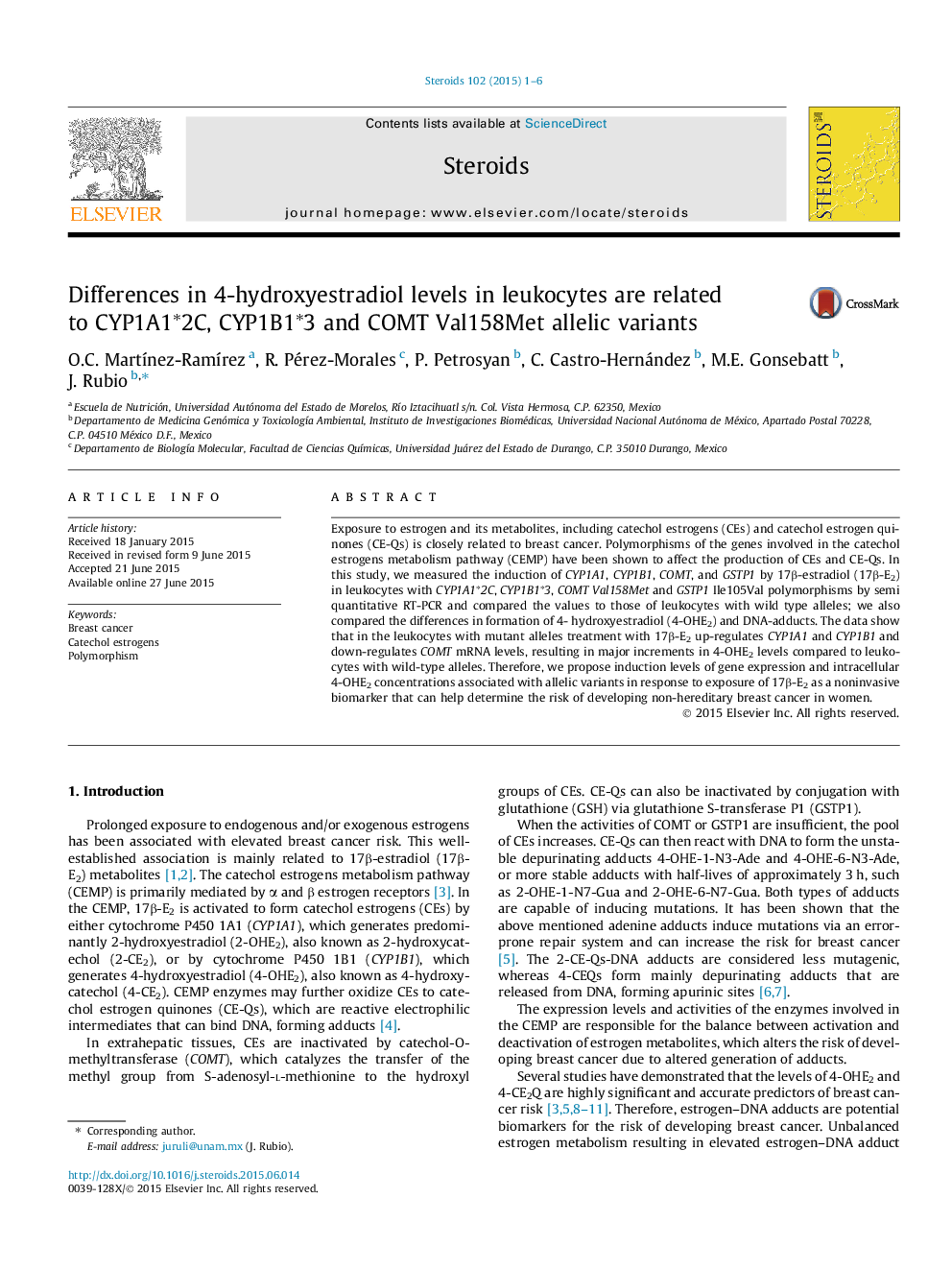| Article ID | Journal | Published Year | Pages | File Type |
|---|---|---|---|---|
| 2027539 | Steroids | 2015 | 6 Pages |
•We propose a non-invasive biomarker to assess individual risk for breast cancer.•We found differences in the 4-OHE2 between leukocytes with different alleles.•The “leukocytes with mutant alleles” displayed marginally lower levels of adducts.
Exposure to estrogen and its metabolites, including catechol estrogens (CEs) and catechol estrogen quinones (CE-Qs) is closely related to breast cancer. Polymorphisms of the genes involved in the catechol estrogens metabolism pathway (CEMP) have been shown to affect the production of CEs and CE-Qs. In this study, we measured the induction of CYP1A1, CYP1B1, COMT, and GSTP1 by 17β-estradiol (17β-E2) in leukocytes with CYP1A1∗2C, CYP1B1∗3, COMT Val158Met and GSTP1 Ile105Val polymorphisms by semi quantitative RT-PCR and compared the values to those of leukocytes with wild type alleles; we also compared the differences in formation of 4- hydroxyestradiol (4-OHE2) and DNA-adducts. The data show that in the leukocytes with mutant alleles treatment with 17β-E2 up-regulates CYP1A1 and CYP1B1 and down-regulates COMT mRNA levels, resulting in major increments in 4-OHE2 levels compared to leukocytes with wild-type alleles. Therefore, we propose induction levels of gene expression and intracellular 4-OHE2 concentrations associated with allelic variants in response to exposure of 17β-E2 as a noninvasive biomarker that can help determine the risk of developing non-hereditary breast cancer in women.
